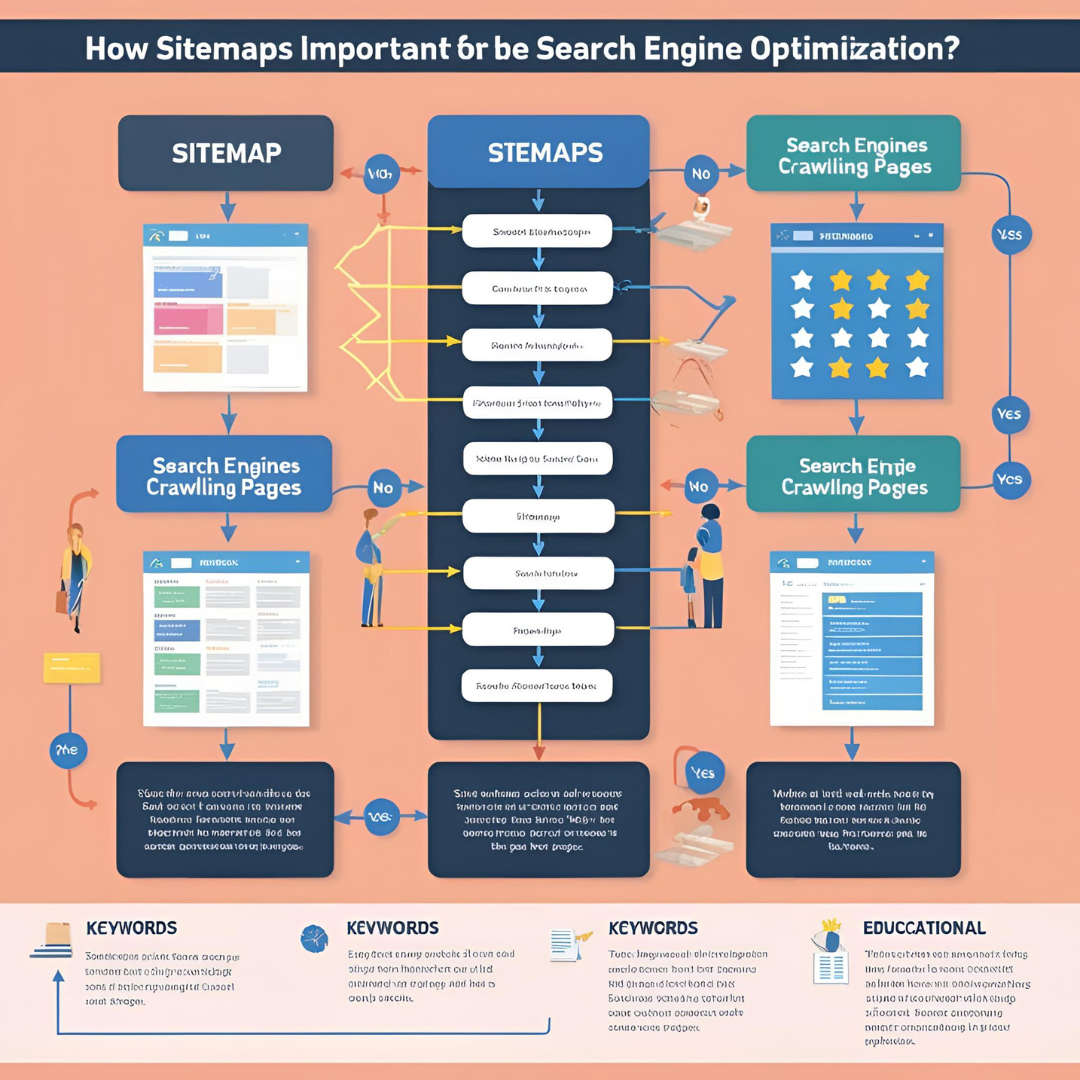
06
How Are Sitemaps Important for the Search Engine Optimization Process
Wondering if sitemaps really matter for SEO? Learn why they’re essential, how to create & submit them correctly, and avoid common mistakes that hurt rankings. Boost your site’s visibility today!
Sitemaps might not be the flashiest part of SEO, but they’re one of the most important. Think about it—what good is amazing content if search engines can’t find it? Without a solid sitemap, your pages might as well be hidden in a digital black hole.
If SEO is a roadmap to online success, a sitemap is the GPS that guides search engines to every corner of your website.
What Exactly Is a Sitemap?
A sitemap is like a blueprint of your website—a file that lists all your important URLs. It tells search engines:
- What pages you have
- How often they’re updated
- Which pages are most important
There are two main types:
- XML Sitemaps – Designed for search engines (like Google, Bing).
- HTML Sitemaps – Made for users (a clickable list of pages).
While HTML sitemaps help visitors navigate your site, XML sitemaps are the real SEO powerhouse.
Free SEO Audits
Why Sitemaps Matter for SEO
You might be thinking, "If my site is well-linked internally, do I really need a sitemap?" The short answer: Yes. Here’s why:
1. Helps Search Engines Discover Your Pages Faster
Google’s bots don’t always find every page on their own, especially if:
- Your site is new (few backlinks).
- You have a large website (thousands of pages).
- Your internal linking isn’t perfect.
A sitemap acts like a cheat sheet, ensuring no page gets left behind.
2. Improves Crawl Efficiency (Saves Your "Crawl Budget")
Search engines have a limited "crawl budget"—the number of pages they’ll crawl on your site in one go. If you have a massive e-commerce store or blog, a sitemap helps bots prioritize the most important pages instead of wasting time on low-value ones.
3. Speeds Up Indexing of New Content
Just published a new blog post or product page? A sitemap tells Google, "Hey, check this out!" so it gets indexed faster.
4. Boosts Visibility for Media (Images, Videos)
Google can’t "see" images or videos like humans do. Specialized image and video sitemaps help them understand and rank your media in search results.
When Do You Really Need a Sitemap?
Not every site requires one, but you definitely need one if:
✅ Your site is large (e.g., e-commerce stores with thousands of products).
✅ Your site is new (few backlinks = harder for Google to find pages).
✅ You have lots of media (images, videos, galleries).
✅ Your site has "orphan pages" (pages with no internal links).
If your site is small (under 50 pages) and well-linked internally, you might get by without one—but why take the risk?
How to Create a Sitemap (The Easy Way)
You could code an XML sitemap manually… but who has time for that? Instead, use these simple methods:
1. Use a Plugin (WordPress Users)
If your site runs on WordPress, plugins like Yoast SEO or Rank Math generate sitemaps automatically. Just install, activate, and you’re done.
2. Use a Sitemap Generator Tool
For non-WordPress sites, tools like:
- XML-Sitemaps.com (free for small sites)
- Screaming Frog SEO Spider (advanced users)
- Google’s Sitemap Generator
…can create a sitemap in seconds.
3. Best Practices for Sitemaps
- Only include canonical URLs (no duplicates).
- Keep it under 50,000 URLs per file (split into multiple if needed).
- Update it regularly (automate if possible).
Submitting Your Sitemap to Google & Bing
Creating a sitemap is half the battle—you also need to submit it to search engines.
1. Submit to Google Search Console
- Go to Google Search Console.
- Select your property.
- Click "Sitemaps" in the left menu.
- Enter your sitemap URL (e.g., yoursite.com/sitemap.xml).
- Hit Submit.
2. Submit to Bing Webmaster Tools
- Log in to Bing Webmaster Tools.
- Navigate to "Sitemaps".
- Add your sitemap URL.
- Click Submit.
Common Mistakes to Avoid
❌ Blocking your sitemap in robots.txt (make sure it’s accessible).
❌ Including broken or redirected URLs (404s hurt your crawl budget).
❌ Forgetting to update it (outdated sitemaps = outdated indexing).
Advanced Sitemap Tips for Better SEO
Want to take it up a notch? Try these pro strategies:
1. Use <lastmod> and <priority> Tags
- <lastmod> tells Google when a page was last updated.
- <priority> (0.1 to 1.0) helps prioritize important pages.
Example:
<url> <loc>https://yoursite.com/blog/seo-tips</loc> <lastmod>2024-05-15</lastmod> <priority>0.8</priority> </url>
2. Use Multiple Sitemaps for Large Sites
Instead of one massive file, split into:
- blog-sitemap.xml
- products-sitemap.xml
- images-sitemap.xml
Then, create a sitemap index file to organize them.
3. Add Your Sitemap to Robots.txt
Add this line at the top of your robots.txt:
Sitemap: https://yoursite.com/sitemap.xml
This helps search engines find it even if you forget to submit manually.
Final Thoughts: Don’t Skip Sitemaps!
Sitemaps might not be glamorous, but they’re a non-negotiable part of SEO. They ensure search engines find, crawl, and index your content efficiently—especially if you have a large or complex site.
TL;DR Checklist:
✔ Create an XML sitemap (automate if possible).
✔ Submit it to Google & Bing.
✔ Avoid common mistakes (broken links, outdated files).
✔ Use advanced tags (<lastmod>, <priority>) for better control.
Follow these steps, and you’ll make sure your hard work doesn’t go unnoticed by search engines.
Contact
Missing something?
Feel free to request missing tools or give some feedback using our contact form.
Contact Us